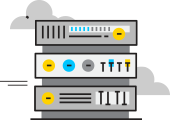A supply-chain attack is a form of cyberattack that targets vulnerabilities in a company’s supply chain to compromise the security of the final product or service delivered to the end-users. These attacks exploit the interconnected nature of modern supply chains, where various entities and components collaborate to create a finished product or service. Cybercriminals leverage this interconnectedness to infiltrate and compromise one or more components of the supply chain, thereby gaining access to the target organization’s systems or data.
The History of the Origin of Supply-Chain Attack and the First Mention of It
The concept of supply-chain attacks has been around for many years, but it gained significant attention in the cybersecurity community around the early 21st century. One of the earliest mentions of a supply-chain attack is attributed to the “SQL Slammer” worm in 2003. This worm exploited a vulnerability in Microsoft SQL Server, spreading rapidly through the internet and causing widespread disruption.
Detailed Information about Supply-Chain Attack
A supply-chain attack is a multi-faceted attack vector that involves various stages and techniques. Here’s an overview of how a typical supply-chain attack works:
-
Initial Compromise: The attacker identifies and compromises a vulnerable component within the target’s supply chain. This component could be hardware, software, or even a service provider.
-
Malware Injection: The attacker injects malicious code or malware into the compromised component. This malware is designed to evade detection and provide the attacker with unauthorized access to the target’s systems.
-
Distribution: The compromised component is then distributed through the supply chain to the target organization. It could be pre-installed in a device, bundled with software, or delivered through an update mechanism.
-
Infection and Proliferation: Once the compromised component reaches the target’s environment, the malware activates and starts to infect other parts of the network, leading to lateral movement and privilege escalation.
-
Data Theft or Disruption: With a foothold in the target’s systems, the attacker can execute various malicious activities, such as stealing sensitive data, disrupting operations, or launching further attacks.
Analysis of the Key Features of Supply-Chain Attack
Supply-chain attacks possess several key features that make them particularly insidious and challenging to detect:
-
Trust Exploitation: As supply-chain components are trusted by the target organization, the malicious code often goes unnoticed by traditional security measures.
-
Widespread Impact: Successful supply-chain attacks can have far-reaching consequences as they compromise multiple organizations and their customers.
-
Complexity: The intricate nature of supply chains and the involvement of numerous stakeholders increase the difficulty of securing every link effectively.
-
Delayed Detection: Supply-chain attacks may lie dormant for extended periods, making it challenging to attribute the origin of the attack and detect the initial compromise.
Types of Supply-Chain Attack
Supply-chain attacks can manifest in various forms, each targeting different stages of the supply chain. Some common types include:
| Type | Description |
|---|---|
| Software Supply-Chain | Malicious code injected into legitimate software packages or updates, distributed to users. |
| Hardware Supply-Chain | Manipulation of hardware components during manufacturing or distribution to introduce vulnerabilities. |
| Service Provider | Targeting third-party service providers and using them as a gateway to infiltrate target organizations. |
| Physical Tampering | Unauthorized access to physical components or products during transit, leading to compromise. |
Ways to Use Supply-Chain Attack, Problems, and Their Solutions
Supply-chain attacks pose significant challenges to cybersecurity professionals, and addressing them requires a multi-pronged approach:
-
Vendor Assessment: Regularly assess and audit the security practices of vendors and third-party partners to ensure they meet stringent security standards.
-
Code Review and Signing: Employ code reviews and digital code signing to verify the authenticity and integrity of software components.
-
Isolation and Segmentation: Implement network segmentation to limit the impact of a potential compromise and isolate critical systems.
-
Continuous Monitoring: Utilize robust monitoring and anomaly detection to identify suspicious activities and unusual patterns.
Main Characteristics and Other Comparisons with Similar Terms
| Term | Description |
|---|---|
| Supply-Chain Attack | Targets vulnerabilities in the supply chain to compromise the final product or service. |
| Man-in-the-Middle | Intercepts and alters communication between two parties, often used for data interception or modification. |
| Phishing | Aims to trick individuals into revealing sensitive information, usually through deceptive emails or websites. |
| Ransomware | Malware that encrypts files and demands a ransom for decryption keys, causing data loss and financial damage. |
Perspectives and Technologies of the Future Related to Supply-Chain Attack
As technology evolves, so do the methods and sophistication of supply-chain attacks. Future perspectives and technologies to combat such attacks include:
-
Blockchain for Verification: Leveraging blockchain technology to verify the integrity and origin of supply-chain components.
-
Artificial Intelligence: Using AI-driven solutions to identify anomalies and detect potential supply-chain attacks.
-
Zero-Trust Architecture: Implementing zero-trust principles to minimize the impact of supply-chain breaches.
How Proxy Servers Can Be Used or Associated with Supply-Chain Attack
Proxy servers can inadvertently become a part of the supply chain that is vulnerable to exploitation. Cyber attackers might compromise proxy servers to:
-
Hide Origin: Use proxies to obfuscate their identity and location, making it challenging to trace the attack’s source.
-
Bypass Filters: Manipulate proxy settings to bypass security filters and gain unauthorized access to target networks.
It is essential for organizations to use reputable and secure proxy server providers like OneProxy (oneproxy.pro) to minimize the risk of proxy servers becoming a weak link in their supply chain security.
Related Links
For more information about supply-chain attacks and cybersecurity, please refer to the following resources:
- National Institute of Standards and Technology (NIST) – Supply Chain Risk Management
- United States Computer Emergency Readiness Team (US-CERT) – Supply Chain Risk Management Practices for Federal Information Systems and Organizations
- MITRE – Common Weakness Enumeration – Supply-Chain Attacks
Remember, staying vigilant and adopting a proactive approach to supply-chain security are crucial in mitigating the risks posed by these evolving cyber threats.




